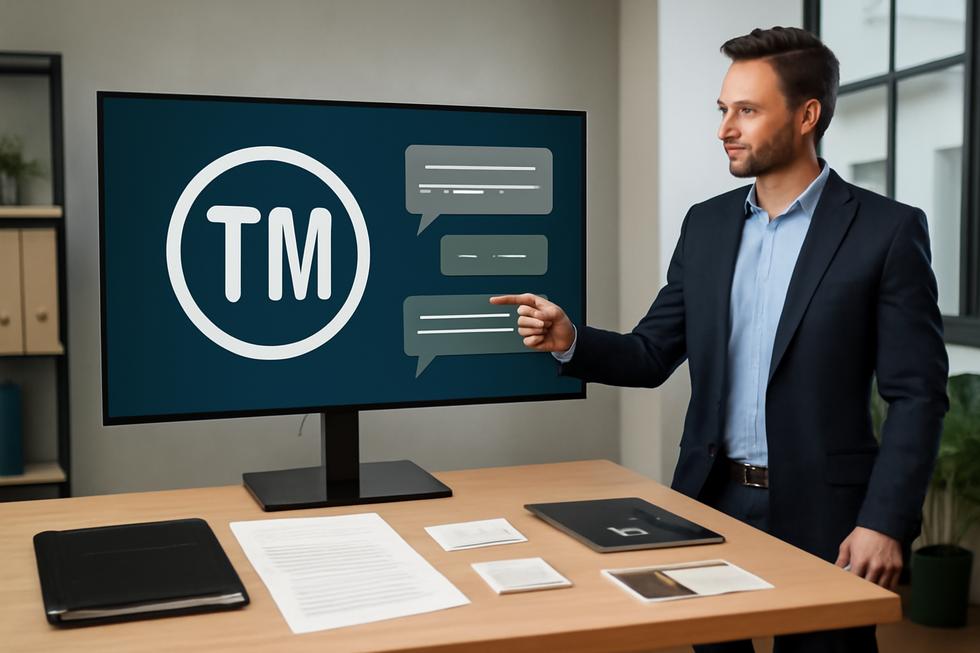Introduction
When it comes to protecting unique elements of your business identity, many entrepreneurs wonder how to legally safeguard their catchy phrases or slogans. While the instinct might be to seek a patent for these sayings, patent law isn’t designed to cover words or expressions. Instead, trademark law offers the appropriate pathway for protecting sayings that represent your brand’s voice and distinctiveness. This guide breaks down why you cannot patent a saying and explores the legal distinctions between patents and trademarks. You will discover a practical step-by-step approach to registering your saying as a trademark, understand the eligibility criteria, and navigate common legal challenges. Finally, you will gain valuable branding and marketing tips to maximize your saying’s impact and legal protection. Together, these chapters build a clear roadmap for business owners eager to turn their phrases into powerful, legally protected assets.
Tables of Contents
Chapter 1: Understanding Why Patenting a Saying Is Not Possible and Alternatives
- Why Sayings Cannot Be Patented: The Legal Limits and Viable Legal Protections Instead
- Harnessing Trademark and Legal Strategies to Protect Your Saying Beyond Patents
Chapter 2: Key Legal Differences Between Patents and Trademarks in the Context of How Do You Patent a Saying
- Understanding Why Patents Exclude Sayings and Trademarks Shield Brand Phrases
- Navigating Trademark Protection: Securing Your Saying as a Distinctive Brand Element
Chapter 3: Step-by-Step Process on How Do You Patent a Saying Through Trademark Registration
- Navigating Trademark Searches and Class Selection: Essential Steps to Secure Your Saying
- Navigating the Trademark Journey: Filing, Examination, and Keeping Your Saying Protected
Chapter 4: Criteria for Trademark Eligibility Relevant to How Do You Patent a Saying
- Understanding Distinctiveness and Originality: Key to Trademarking a Saying Instead of Patenting It
- Navigating Legal Nuances and Registration Steps to Secure Trademark Protection for Sayings
Chapter 5: Common Legal Challenges and Considerations in How Do You Patent a Saying
- Navigating Patent Ineligibility: Why Sayings Fail to Meet Patent Criteria and Its Legal Implications
- Trademark Protection: Securing and Enforcing Rights Over Sayings in Commerce
Chapter 6: Practical Tips and Best Practices for How Do You Patent a Saying in Branding and Marketing
- Navigating Trademark Eligibility and Searches: Essential Strategies to Protect Your Saying in Branding
- Mastering Trademark Registration and Protection for Sayings in Branding and Marketing
Chapter 1: Understanding Why Patenting a Saying Is Not Possible and Alternatives
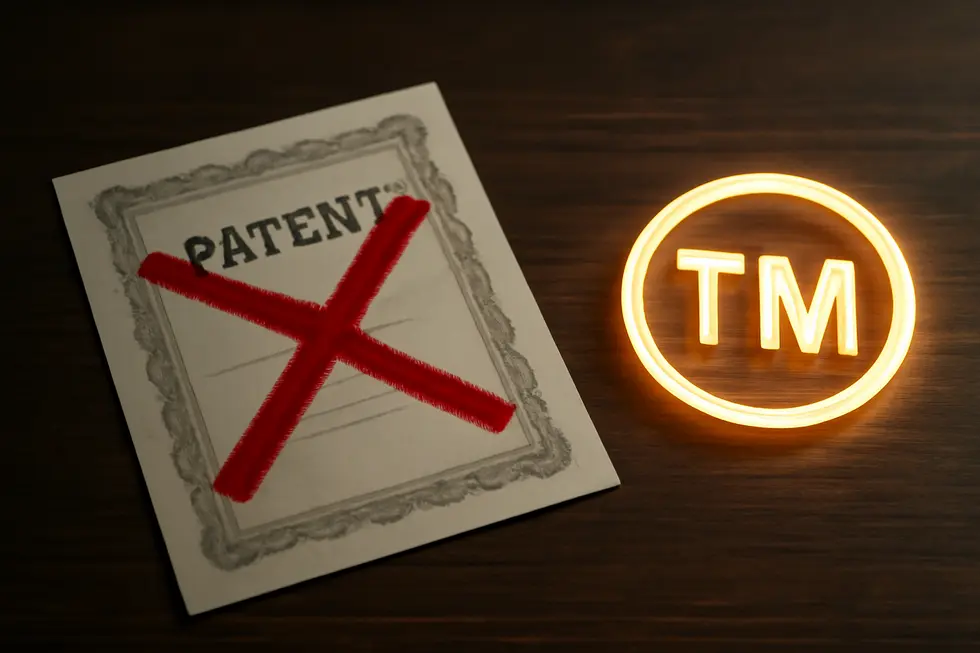
1. Why Sayings Cannot Be Patented: The Legal Limits and Viable Legal Protections Instead
Why Sayings Cannot Be Patented: The Legal Limits and Viable Legal Protections Instead
Patenting a saying is legally impossible because patent law is designed to protect inventions – tangible or technical innovations that solve specific problems. Sayings, by contrast, are abstract expressions or linguistic constructs without technical function or industrial application. U.S. patent law restricts patents to inventions that fit within defined categories such as machines, processes, or compositions of matter, all requiring novelty, utility, and non-obviousness. Sayings fail to meet these criteria since they are neither new inventions nor technical solutions.
Judicial decisions reinforce this boundary. For example, landmark rulings like Diamond v. Chakrabarty and Alice v. CLS Bank clarify that abstract ideas, including phrases or linguistic expressions, fall outside patentable subject matter. These rulings emphasize that granting patents on sayings would improperly monopolize basic tools of communication and thought, thus hindering innovation in technology and science.
From a technical perspective, patent claims demand specificity and a concrete technical contribution. Sayings are inherently vague and lack the detailed structural or functional elements required to satisfy these standards. They do not embody a process, machine, or composition of matter that can be distinctly claimed or enforced.
While patents disregard sayings, there are effective alternative protections. Trademark law allows protection of sayings when used as identifiers for goods or services. Registering a saying as a trademark grants exclusive rights to its use in commerce, guarding the brand identity it represents. Additionally, although copyright does not protect short phrases alone, incorporated sayings can receive protection as part of larger creative works. Trade secrets may offer rare protection if a saying is part of a confidential business method, but this is uncommon.
To explore trademark protection and how it applies to sayings, see this detailed guide on trademark protection for business names and logos.
For further reading on why patents exclude abstract ideas like sayings, refer to PatentPC’s overview on patent eligibility: https://www.patentpc.com/what-can-be-patented.
2. Harnessing Trademark and Legal Strategies to Protect Your Saying Beyond Patents
Patenting a saying is not an option because patent law is designed to protect inventions—new and useful processes, machines, or compositions—not words or phrases. Sayings lack the functional or technical innovation required for patents, which demand novelty, non-obviousness, and utility. However, this does not leave creators without protections for their distinctive phrases. Instead, trademark law offers a powerful alternative specifically tailored to safeguard words and phrases that identify and distinguish commercial goods or services.
Trademark protection applies if the phrase is sufficiently distinctive and serves as a source identifier in commerce. To qualify, the phrase must transcend generic or purely descriptive language and be actively used in connection with actual commercial goods or services. Once registered through the United States Patent and Trademark Office (USPTO), the phrase gains legal rights that help prevent others from using it in ways that could cause consumer confusion. This process involves a thorough search for conflicting marks and submission of a trademark application with appropriate fees. Famous examples like “Don’t leave home without it” demonstrate how slogans can become synonymous with a brand through trademarking.
Beyond trademarks, other legal strategies can help protect phrases depending on their context. For instance, if a saying forms part of a larger creative work, copyright law may offer limited protection, though copyright does not cover short phrases alone. Registering your business name at the state level or securing domain names that incorporate the phrase can create additional layers of exclusive use and online presence protection. Furthermore, incorporating the phrase in contracts or licensing agreements helps control its authorized use and prevents unauthorized exploitation.
Trade dress protection, which safeguards a product’s visual appearance, can sometimes complement trademarked phrases but generally does not extend to words alone. Understanding these varied legal options allows brand owners and creators to protect their sayings effectively within the proper intellectual property framework.
For more detailed guidance on trademarking phrases and exploring all lawful alternatives, consult resources like trademark2go’s detailed explanation of trademark protection for business names and logos.
Chapter 2: Key Legal Differences Between Patents and Trademarks in the Context of How Do You Patent a Saying

1. Understanding Why Patents Exclude Sayings and Trademarks Shield Brand Phrases
Patents and trademarks serve fundamentally different legal roles, especially when examining the protection of a saying.
A patent provides exclusive rights for inventions that are novel, non-obvious, and useful. Typically, these inventions involve processes, machines, or compositions of matter that advance technology or industry. The patent system incentivizes innovation by granting inventors a time-limited monopoly—usually 20 years—in exchange for publicly disclosing technical details. Securing a patent requires a detailed application clearly demonstrating how the invention differs from prior art and proves its practical utility, often demanding legal expertise.
Conversely, a trademark safeguards brand identifiers — including words, phrases, logos, or symbols — that distinguish one party’s goods or services from another’s. Unlike patents, trademarks do not protect inventions or creative content themselves but rather the source identity tied to commerce. A saying may qualify for trademark protection if it functions as a distinctive brand element that helps consumers recognize a product’s origin. For instance, a memorable phrase repeatedly used in marketing for a particular product or service can serve this role.
Attempting to patent a saying is legally unfeasible because patent law excludes abstract expressions, slogans, or phrases not tied to functional inventions. Instead, the appropriate legal route to protecting a saying is through trademark registration. This process includes verifying the phrase’s distinctiveness, ensuring it does not conflict with existing trademarks, and submitting an application with the U.S. Patent and Trademark Office (USPTO). Once trademarked, the protection can last indefinitely, provided it continues being used and renewed.
This essential distinction clarifies why patent rights do not extend to sayings, while trademarks offer a viable mechanism to protect phrases that identify and promote goods or services. For essential guidance on trademark protection for words and slogans, consider exploring trademark protection for business names and logos.
For more comprehensive information on intellectual property categories and their applications, official USPTO resources provide valuable insights into both patent and trademark systems.
2. Navigating Trademark Protection: Securing Your Saying as a Distinctive Brand Element
Understanding why sayings cannot be patented is crucial, but equally important is knowing how to protect them legally through trademark registration. Unlike patents, which protect inventions and functional creations, trademarks safeguard words, phrases, symbols, or designs that serve as identifiers of the source of goods or services. Sayings, when used as slogans or catchphrases to represent a brand, fall under this protection.
Trademark eligibility depends heavily on distinctiveness. A saying must uniquely distinguish your goods or services from those of others to qualify. Generic or overly descriptive phrases generally face challenges during registration because they do not serve as effective brand identifiers. Strong trademarks tend to be arbitrary, fanciful, or suggestive, enabling consumers to associate the phrase distinctly with your business.
To obtain a trademark, one must demonstrate the phrase’s use or intent to use it commercially. This means the saying should appear on products, packaging, or marketing materials linked to your offerings. Upon successful registration through the United States Patent and Trademark Office (USPTO), you gain exclusive nationwide rights and the ability to enforce your brand protection in federal courts. Using the ® symbol further signals legal ownership and deters potential infringers.
Maintaining trademark rights requires ongoing use in commerce and timely renewals to avoid cancellation. Beyond the United States, international protection is possible through agreements like the Madrid Protocol, streamlining trademark registration across multiple countries.
The strategic difference between patents and trademarks lies in purpose: patents cover new inventions, while trademarks protect brand identity. Copyrights do not generally extend to brief phrases or slogans. Thus, securing your saying’s value lies in the trademark registration process, which includes conducting clearance searches, filing accurate applications, and monitoring enforcement. Legal guidance is recommended to navigate potential complexities such as refusals or oppositions.
For a deeper understanding of trademark protections that can safeguard your brand, consider exploring resources on trademark protection for business names and logos. More details on the nature and benefits of trademarks are available at Wikipedia’s Trademark page.
Chapter 3: Step-by-Step Process on How Do You Patent a Saying Through Trademark Registration
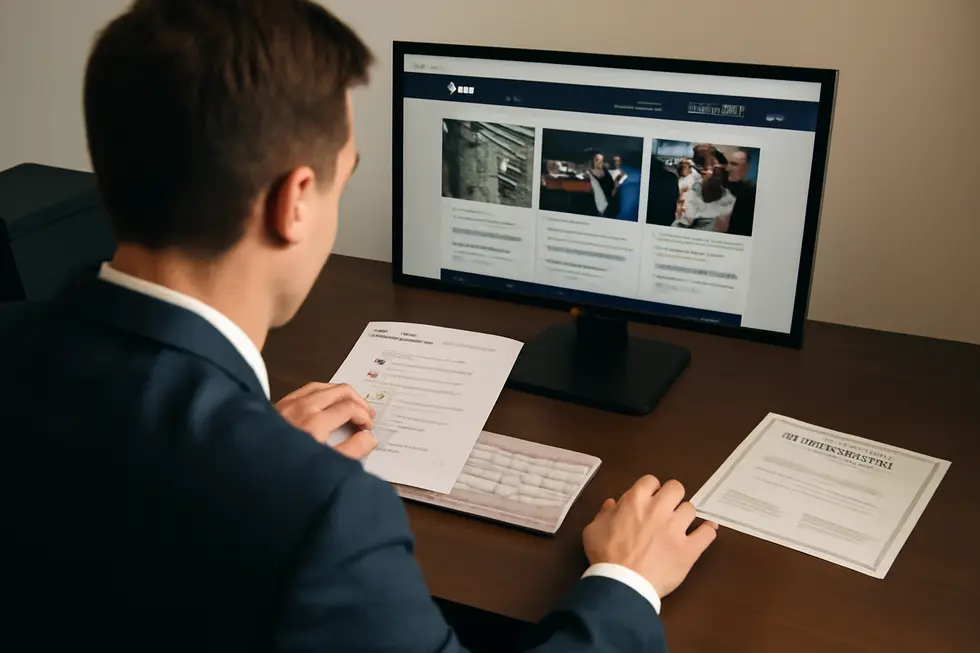
1. Navigating Trademark Searches and Class Selection: Essential Steps to Secure Your Saying
Successfully protecting a saying through trademark registration hinges on thorough preparation, especially conducting a detailed trademark search and selecting the correct class. The first critical step involves searching the United States Patent and Trademark Office (USPTO) database to uncover existing trademarks identical or similar to your saying. This search should extend beyond exact matches to include variations such as phonetic equivalents, alternative spellings, synonyms, and related phrases. For example, if your saying is “Cool Lead,” checking for similar-sounding or spelled marks like “Qool,” “Kool,” or “Leed” is essential to avoid a potential conflict. A comprehensive search helps anticipate and prevent application rejection due to similarity with existing marks.
Equally important is pinpointing the right trademark class. The USPTO classifies trademarks according to the goods or services they represent, ranging from apparel to technology products. The protection granted by the trademark will only apply within the chosen class or classes, so accurately identifying the category tied to your saying’s use is vital. Utilize the USPTO Acceptable Identification of Goods and Services Manual or classification guides to clarify which category best fits your product or service. This precision ensures your saying gains relevant and enforceable protection.
Following the search and class selection, preparing the application involves submitting your personal details, a clear representation of the trademarked saying—whether in plain text or stylized form—a description of the goods or services, and your basis for filing, either actual use in commerce or intent to use. Filing electronically via the USPTO’s Trademark Electronic Application System (TEAS) offers two paths: TEAS Plus, which requires more upfront detail but incurs lower fees, or TEAS Standard, providing greater flexibility at a higher cost.
Throughout the process, monitoring your application’s progress and responding promptly to USPTO communications is crucial to avoid abandonment. Once approved, the saying enters a publication phase during which third parties may file opposition. Absent opposition, registration is finalized but requires regular maintenance filings to remain active.
Because trademark registration protects the phrase as a brand identifier rather than an invention, it is the correct legal route when seeking to “patent” a saying. For those interested in a detailed guide on trademark rules and classification, resources such as the USPTO Acceptable Identification of Goods and Services Manual prove invaluable. This foundation solidly supports the complex task of securing one’s saying under trademark law, clarifying the steps needed to navigate the legal landscape successfully.
For more insight into trademark protection of business names and slogans, consider exploring trademark protection of business names and logos.
2. Navigating the Trademark Journey: Filing, Examination, and Keeping Your Saying Protected
Protecting a saying through trademark registration requires a clear understanding of the filing, examination, and maintenance phases managed by the U.S. Patent and Trademark Office (USPTO). The process begins with selecting a distinctive phrase that clearly identifies your goods or services. This step is critical since the phrase must not be confusingly similar to existing trademarks within the same category, which could jeopardize registration.
Before filing, conducting a thorough trademark search using the USPTO’s Trademark Electronic Search System (TESS) helps you avoid potential conflicts by revealing similar or identical existing marks. Once confident in your phrase’s uniqueness, you must decide on your filing basis: either actual use in commerce or intent to use. Filing based on actual use means the phrase is already employed commercially, while intent to use applies if you plan to launch its use soon after registration.
Your trademark application is submitted online through the USPTO’s Trademark Electronic Application System (TEAS). It must include your contact details, a precise representation of the phrase, identification of the associated goods or services, and the relevant filing basis. Filing fees are required upfront and are non-refundable.
After submission, a USPTO trademark examiner reviews your application to ensure all legal and technical requirements are met. This includes verifying the phrase’s distinctiveness and absence of conflicts with prior trademarks. If issues arise, the USPTO issues an office action, demanding corrective responses or clarifications within set deadlines. Once cleared, the phrase is published in the Official Gazette for a 30-day opposition window, allowing others to contest the registration.
If no opposition occurs or any dispute is resolved in your favor, the trademark is officially registered with federal protections nationwide. However, maintaining your registration demands regular filings and fees at specific intervals, such as between the 5th and 6th years and every ten years thereafter, coupled with continued commercial use of the phrase.
Registering a trademark for your saying grants you exclusive rights to its use within your business category and strengthens your ability to legally defend it. For more detailed guidance, resources like the comprehensive UpCounsel trademark guide offer valuable insights into the entire trademarking process.
Chapter 4: Criteria for Trademark Eligibility Relevant to How Do You Patent a Saying
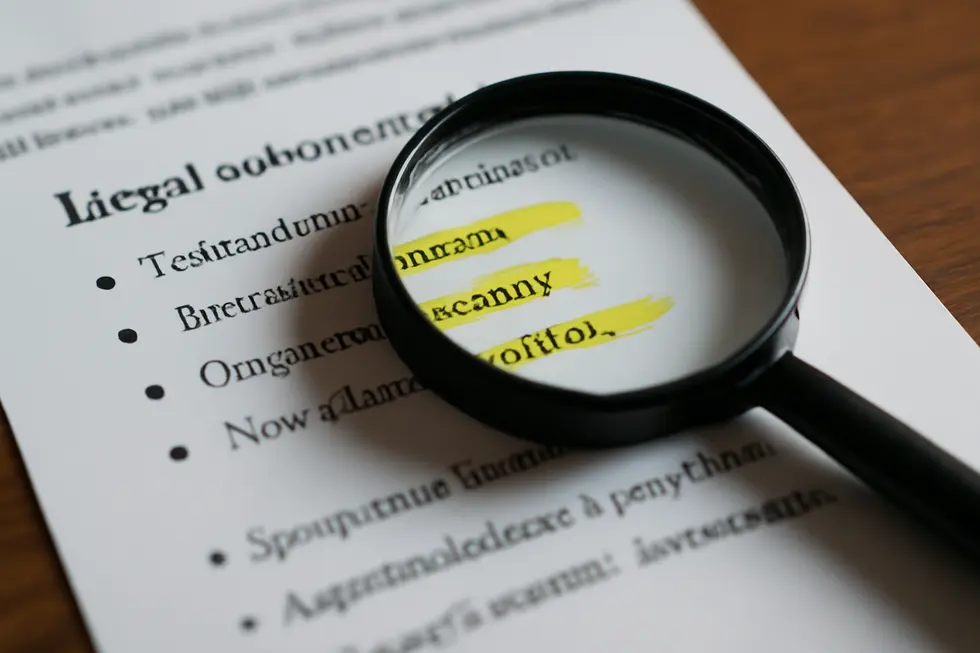
1. Understanding Distinctiveness and Originality: Key to Trademarking a Saying Instead of Patenting It
When exploring how to protect a saying, understanding the crucial roles of distinctiveness and originality within trademark law is essential, as patent law does not cover sayings. Distinctiveness refers to a phrase’s ability to uniquely identify the source of goods or services, distinguishing it from competitors. Trademark law classifies marks based on their distinctiveness levels, ranging from fanciful and arbitrary to suggestive. Fanciful marks are entirely invented words with no prior meaning, while arbitrary marks are common words unrelated to the product, and suggestive marks hint at qualities without direct description. Such inherently distinctive marks enjoy robust protection and are easiest to register.
However, many sayings fall into the descriptive category. Descriptive phrases directly convey a characteristic or quality of a product or service, making them weak candidates for trademark protection unless they have acquired secondary meaning. Secondary meaning exists when consumers strongly associate the phrase with a particular source, which typically develops through long, exclusive use and significant marketing. Conversely, generic terms, those common words identifying a type of product or service, cannot be trademarked at all.
Originality in trademarks focuses less on creativity or innovation—as required for patents or copyrights—and more on uniqueness regarding existing marks. It ensures the phrase is not a mere copy of other marks and contributes to distinctiveness. For someone aiming to protect a saying, originality can increase the chances of registration, especially if it involves slight modifications of common sayings that create a unique identifier.
Before applying for trademark registration, thorough searches in the USPTO’s Trademark Electronic Search System (TESS) are necessary to avoid conflicts. The application will require detailing how the phrase is used commercially. Understanding these nuances clarifies why patenting a saying is not feasible, but trademarking one is achievable when it meets these important distinctiveness and originality criteria.
For further detailed guidance on this topic, consider reviewing can-you-trademark-a-slogan.
2. Navigating Legal Nuances and Registration Steps to Secure Trademark Protection for Sayings
Understanding the legal and procedural landscape is essential when seeking trademark protection for a saying, especially given that patenting a phrase is not feasible. Trademark law requires that the saying operates distinctly as a brand identifier, linking the phrase to the source of particular goods or services. To qualify, the saying must exhibit a certain level of distinctiveness, which the United States Patent and Trademark Office (USPTO) classifies on a spectrum — from arbitrary or fanciful marks, which are inherently distinctive and strongly protected, to descriptive marks that may only gain protection upon acquiring secondary meaning through extensive use. Generic phrases, however, cannot be trademarked.
The saying must not only be distinctive but also graphically representable in the application process to the USPTO. A critical preliminary step is conducting a comprehensive trademark search to ensure the phrase does not clash with existing trademarks, mitigating risks of application refusal or infringement disputes. Once cleared, the application must meticulously meet procedural requirements, including proper documentation and timely responses to USPTO correspondences. In cases where a phrase will have joint ownership, contracts or agreements should clarify usage rights.
Contrasting this with patent eligibility highlights why patents do not protect sayings. Patents apply to inventions meeting criteria such as novelty, non-obviousness, and utility within defined patent-eligible categories. Abstract phrases or standalone sayings fail to satisfy these since they represent ideas, not inventions integrated into a functional design.
Therefore, while a saying cannot be patented, trademark law provides a robust mechanism to secure exclusive rights to its commercial use. By distinguishing the phrase as a brand element and carefully navigating USPTO procedures, businesses can effectively protect valuable sayings. For in-depth guidance on successful trademark registration and eligibility, consulting detailed resources and legal expertise is advisable.
For further reference on trademark protection strategies, see this comprehensive guide on trademark protection for business names and logos.
Additional detailed information is available at the USPTO resource: https://litem.in/things-to-consider-before-registering-a-trademark.php
Chapter 5: Common Legal Challenges and Considerations in How Do You Patent a Saying
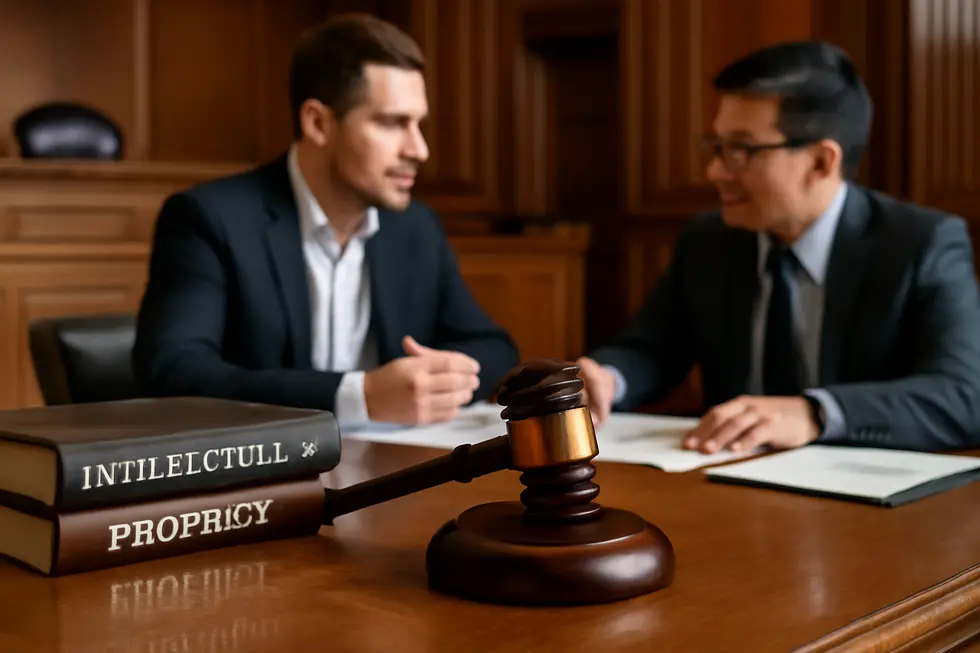
1. Navigating Patent Ineligibility: Why Sayings Fail to Meet Patent Criteria and Its Legal Implications
Patent ineligibility presents a fundamental obstacle in attempting to patent a saying. Under U.S. law, specifically 35 U.S.C. § 101, patents protect inventions, which must exhibit novelty, usefulness, and non-obviousness, usually tied to functional or technical advancements. Sayings, being merely linguistic expressions or abstract ideas, do not meet these standards. The legal system explicitly excludes abstract ideas and mental processes from patent protection, categories under which sayings almost invariably fall.
The U.S. Patent and Trademark Office (USPTO) and courts apply a two-pronged test to determine eligibility. First, they assess whether the claimed subject matter involves a judicial exception such as an abstract idea, a determination that sayings frequently trigger due to their conceptual nature. Second, even if an abstract idea is involved, the claim must integrate it into a practical application contributing “significantly more” than the abstract content itself. Sayings do not possess inherent technical or functional elements to satisfy this requirement.
Furthermore, current USPTO guidelines underscore that mental processes or concepts performed entirely in the human mind are ineligible. As sayings are inherently mental constructs without concrete application or physical embodiment, they are excluded from patentability. This restriction contributes to inconsistent interpretations by patent examiners and courts, particularly as fields like artificial intelligence and software complicate the boundary between abstract ideas and patent-eligible inventions. However, these complexities do not aid sayings, which lack the technical implementation that might overcome patent barriers.
The legal consequence is clear: efforts to patent a saying are generally futile due to this statutory ineligibility. Instead, protecting a saying involves other intellectual property strategies such as trademark registration, which is designed to safeguard brand identifiers like slogans and catchphrases. For deeper insights into patent eligibility and the latest USPTO analysis, reviewing official memoranda such as the August 2025 guidance is recommended.
For those looking to protect phrases and slogans, exploring options beyond patent law, like trademarking, provides a practical and lawful path forward. More information on trademark protections for business identifiers is available at trademark protection business name logo.
External Reference: [USPTO Memorandum on Patent Subject Matter Eligibility, August 2025]
2. Trademark Protection: Securing and Enforcing Rights Over Sayings in Commerce
Although you cannot patent a saying, trademark law offers a pathway to protect phrases used as brand identifiers. Trademark protection hinges on the saying’s use in commerce to distinguish goods or services. Establishing ownership requires demonstrating priority of use—the first to use the phrase as a trademark generally holds enforceable rights. This foundational principle ensures the trademark owner can act against potential infringers.
Legal enforcement challenges often arise when another party uses a similar saying, leading to consumer confusion about the origin of products or services. Courts apply multifaceted tests, such as the Sleekcraft factors, to evaluate the likelihood of confusion. These consider the similarity of the marks, relatedness of goods, and evidence of actual confusion among consumers. Successfully proving infringement demands clear, convincing evidence that the contested use creates such confusion.
Defenses play a critical role in trademark disputes. Common arguments include fair use—where the phrase is used descriptively or for commentary—and the protection of free speech under the First Amendment, especially relevant when sayings appear in artistic or satirical contexts. Additionally, opponents may claim the trademark has been abandoned through non-use. Courts must carefully balance trademark holders’ rights with these free expression concerns.
The digital age adds further complexity. Emerging technologies like NFTs have tested traditional trademark doctrines, prompting courts to refine how trademark laws apply to new forms of commerce. Enforcement strategies must now address cybersquatting, online infringement, and the challenges of policing counterfeit or unauthorized uses in digital marketplaces.
Because trademark registration strengthens legal protections and provides presumptions of validity, conducting thorough clearance searches before registration is essential. Avoiding conflicts with existing trademarks reduces the risk of objections or costly litigation. For businesses aiming to safeguard sayings, crafting unambiguous trademark applications that clearly describe the phrase’s commercial use is vital.
Ultimately, protecting a saying through trademark law requires diligent use, strategic registration, and proactive enforcement considering evolving legal and digital landscapes. For additional details on the essentials of trademark protection for slogans and phrases, visit trademark protection for business names and logos.
External reference: For a comprehensive view of trademark infringement and defenses, see the Ninth Circuit’s recent analyses on trademark enforcement in digital assets.
Chapter 6: Practical Tips and Best Practices for How Do You Patent a Saying in Branding and Marketing

1. Navigating Trademark Eligibility and Searches: Essential Strategies to Protect Your Saying in Branding
When seeking to protect a saying used in branding, understanding trademark eligibility and conducting thorough searches are vital steps. Since patent law does not extend protection to phrases or slogans—focusing instead on inventions or functional innovations—the proper route to safeguard a saying is through trademark registration. A phrase qualifies for trademark protection only if it is distinctive, serving to identify and distinguish the source of goods or services. This distinctiveness may be inherent, where the saying is unique or arbitrary, or it can be acquired through extensive and exclusive use that connects the phrase clearly with a particular brand. Generic or merely descriptive sayings are typically not protectable unless they gain secondary meaning over time.
Before adopting a saying, it is crucial to conduct a comprehensive trademark clearance search. This search examines existing registered trademarks, pending applications, and common law uses to uncover potential conflicts. Overlooking this step can lead to infringement disputes, costly legal battles, or forced rebranding. Equally important is assessing the strength of your saying as a trademark. Strong marks tend to be fanciful, arbitrary, or suggestive, while weaker marks are descriptive and harder to enforce. Avoid phrases that primarily describe a product’s function or quality, as these are less likely to receive protection.
Maintaining meticulous records of your searches and ongoing commercial use can support your application and help enforce your rights if challenges arise. Additionally, adding stylized design elements or unique typography to a saying can enhance its distinctiveness and may qualify it for trade dress protection, broadening legal safeguards.
Ultimately, trademarking—not patenting—is the correct path to protecting a saying in branding and marketing. For deeper insights on trademark search strategies and eligibility criteria, explore resources on clearance searches and trademark distinctiveness. For understanding why patents do not cover sayings, consult expert guidance on patent eligibility requirements. More detailed advice on securing your brand through smart trademark strategies is available at this external resource.
2. Mastering Trademark Registration and Protection for Sayings in Branding and Marketing
While you cannot patent a saying, you can effectively protect it by securing trademark rights, provided the phrase serves as a distinctive brand identifier. Trademark law safeguards words, phrases, and slogans that distinguish your goods or services from others. To navigate this protection, start by ensuring your saying is distinctive and not merely generic or purely descriptive; such phrases generally cannot be trademarked unless they have developed secondary meaning through extensive use.
Before filing, conducting a thorough trademark search is essential. This process helps avoid conflicts with existing registrations and reduces the risk of application denial or infringement disputes. Once confident in your phrase’s uniqueness, submit a trademark application to the U.S. Patent and Trademark Office (USPTO). This application must clearly demonstrate your phrase’s use in commerce as a source identifier for your products or services. Keep in mind the examination process may involve office actions requiring timely legal arguments or amendments, along with a public opposition period where third parties may contest your application.
After registration, maintaining your trademark is crucial to preserving your rights. This maintenance includes timely filing of declarations of use and renewal applications, typically every five to ten years. Consistent use of your trademarked saying across all marketing channels not only solidifies your claim but also helps prevent dilution or loss of distinctiveness. Vigilance is necessary in monitoring the marketplace for unauthorized use; enforcing your rights through cease and desist letters or legal proceedings when infringement arises is vital to sustain exclusivity.
Navigating the complex trademark process benefits greatly from legal expertise, so consider consulting a trademark attorney. If your brand reaches beyond U.S. borders, explore international registrations through treaties like the Madrid Protocol to extend protection globally. By understanding and executing these steps diligently, you ensure your saying remains uniquely associated with your brand, securing its value and impact in the market.
For more detailed guidance on registering and safeguarding slogans, visit the comprehensive resource on trademark protection for business names and logos.
Additional official information on trademark application and maintenance can be found on the United States Patent and Trademark Office (USPTO) website.
Final thoughts
Patenting a saying is not legally feasible because patents are designed to protect inventions, not expressions or phrases. However, business owners can confidently protect their unique sayings by securing trademark registration. Understanding the legal distinctions between patents and trademarks is critical to selecting the right intellectual property protection for your brand message. By following the trademark registration steps and meeting eligibility criteria, you can build robust legal defenses against infringement while enhancing your brand identity. Navigating common legal challenges with informed awareness will safeguard your investment in your saying’s distinctiveness. Incorporating smart branding and marketing practices around your trademarked phrase helps you amplify your market presence and maximize the asset’s value. Equipped with this knowledge, you are well-positioned to transform your saying into a powerful and protected cornerstone of your business success.
Your IP is the foundation of your success – let’s protect it together before it’s too late. We can’t wait to help you turn your ideas into legally secured assets.
About us
undefined
